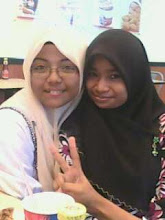Manufacture Of Sulphuric Acid
Uses of sulphuric acid
•Manufacture of fertilisers such as ammonium sulphate.
•Manufacture of electrolyte in lead-acid accumulators.
•Manufacture of soaps and detergents.
•Manufacture of pesticides (insecticide).
•Manufacture of plastic items such as rayon and nylon.
•Manufacture of paints.
Manufacture of sulphuric acid in industry
•Sulphuric acid is manufactured in industry through the Contact process.
Manufacture of ammonia and its salt.
Uses of ammonia
•Manufacture of nitrogenous fertilisers such as ammonium phosphate.
•Manufacture of nitric acid through the Ostwald process.
•Manufacture of electrolytes in dry cells.
•Manufacture of cleaning agents such as washing powder and detergents.
•Manufacture of explosives such as trinitrotoluene (TNT).
•Manufacture of dye.
Properties of ammonia
•Very soluble in water.
•Colourless gas.
•Pungent smell.
•Less dense than air.
•Produces thick white fumes with hydrogen chloride, HCl, gas.
•Has characteristic of weak alkali when dissolve in water.
Manufacture of ammonia.
1.Ammonia is manufactured on a large scale in factories through the Haber process.
2.In the Haber process, nitrogen and hydrogen gases are mixed in the ratio of 1:3 volumes (or moles).
3.The hydrogen gas is obtained from methane, a type of natural gas, while nitrogen gas is obtained from air by fractional distillation of liquified air.
4.The gas mixture is passed over iron (catalyst) at a temperature of 450-550 C
5.The ammonia gas obtained is cooled (temperature of -50 C) to become liquid ammonia.
Alloys
Alloy :
•An alloy is a compound formed from a mixture of metal and other elements.
•An impurity atom (foreign atom) may be atoms of other metals or non-metals such as carbon.
•The process of mixing atom of impurities with atom of pure metal by melting is called alloying.
•The aim of alloying are to:
@ increase the strength and hardness of the metal.
@ prevent corrosion of the metal.
@ improve the appearance of the metal so that it is more attractive.
Synthetic Polymers and Their Uses
Polymers:
•Long chains of molecules made from combinations of many small molecule.
•Small molecule that combine to form polymers are called monomers.
•Can be divided into two types:
@ natural polymer
@ synthetic polymer.
Polymerisation:
•A process of combining monomers to form a long chain of molecules.
The uses of glass and ceramics
Characteristics :
•Brittle @ hard
•Chemically inert @ transparent
•Heat insulator @ not permeable to gas and liquid (fluid)
•Does not conduct electricity.
Uses :
Fused silica glass
•Lenses, spectacles, laboratory glassware, ultraviolet column.
Soda-lime glass
•Glass, bottle containers, mirrors, electrical bulbs, glass windows.
Borosilicate glass
•Bowls, plates, pots, cookware, automobile headlights and laboratory glassware.
Lead crystal glass
•Lenses, prisms, glasses, ornamental items (crystals).
Langgan:
Catat Ulasan (Atom)

Tiada ulasan:
Catat Ulasan